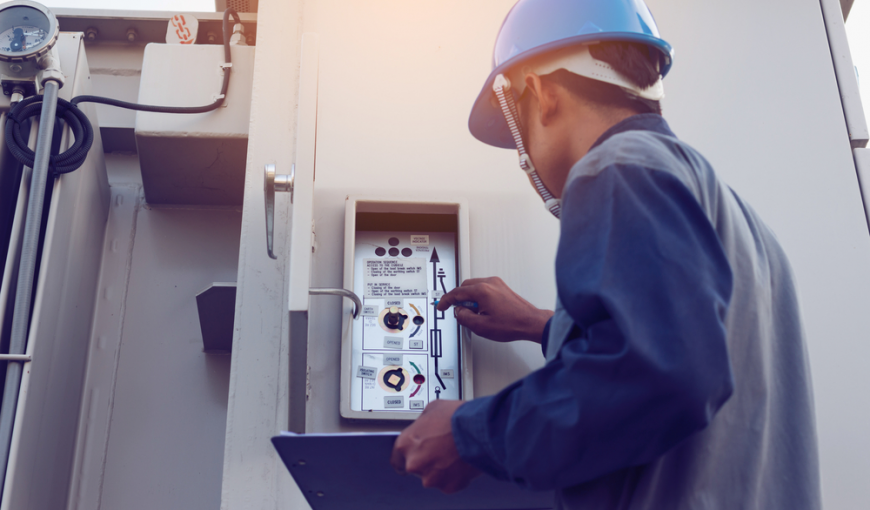Understanding the Pros and Cons of Autonomous Mobile Robots

As warehouse automation trends advance, different types of businesses are in the race to implement various technologies such as autonomous mobile robots to boost profitability, efficiency, and productivity. Read on to learn about the basics of warehouse AMRs and understand their pros and cons.
Autonomous Mobile Robots for Warehousing
Autonomous mobile robots in order fulfillment or warehouse are units capable of interpreting moves within their environment without human supervision. AMRs come with maps, cameras, and onboard sensors compatible with warehouse application software.
These units can be used to execute various functions such as facilitating pick strategies and transporting goods and materials. Using autonomous mobile robots in warehouse operations reduces employees’ time to walk across the facility, enabling them to perform more valuable tasks.
AMRs use lasers to scan through their environment. They also feature embedded systems to help them evaluate the sensor data and ensure they identify obstacles and navigate with ease. Today, autonomous mobile robots come in handy to accelerate palletizing tasks.
Before adopting AMRs consider determining whether or not they are ideal for your operation. While AMRs can be highly beneficial to your facility, they do not fit in all operations or sectors. Let’s discuss their pros and drawbacks to help you determine whether or not they will fulfill your business needs.
Pros
-
AMRs are Flexible
An autonomous mobile robot doesn’t follow a particular route when moving from one point to another. Unlike autonomous guided vehicles that follow a magnetic wire or tape, AMRs carve their lane and avoid barriers. This characteristic makes them more flexible when it comes to executing new tasks.
As seen above, warehouse experts can reprogram AMRs for new warehouse layouts and routes. Allocating an AGV new routes or even altering its environment can be challenging and require more money and time. For example, you may have to install a new wire around the new driving routes.
-
Various Grippers and Accessories are Compatible with AMRs
You can mount a wide range of accessories such as the collaborative robot, grippers, conveyors, lifts, bins, hooks, and on the AMR. The collaborative robot, in this case, falls in the Autonomous Industrial Mobile Manipulator (AIMM) category.
These units can come in handy to move products from one production line to the other. They can also be used as a substitute for a faulty robot, cutting downtime that would come with fixing or replacing the robot. Increasing efficiency in the production line and reducing downtime boosts overall equipment effectiveness (OEE), which is the recognized standard for determining manufacturing productivity.
-
They are Highly Autonomous
Autonomy is one of the most significant advantages of AMR. They can scan through the working space for obstacles without human assistance, even in busy areas where workers frequent, which hinders the robot. For instance, the robots can be programmed to master the starting and finishing points.
Doing so can help them carve their path while scanning to avoid obstacles along the way. Further, robotic programmers can integrate a warehouse map into the robot in advance to save time and guarantee safety. The robot recognizes items not included in the map as barriers and navigates them fast. As a result, the process becomes more flexible, boosting reliability.
-
Installing AMRs is Fast
AMRs come with software required to facilitate their operation. You don’t need to institute a connection between the unit and the existing software within the warehouse, such as WES (warehouse execution system). WES interfaces are a standard in the industry, meaning that the connection is present already.
A warehouse execution system is a method of recording and tracking the process of changing raw materials into the final product in the production line. If a warehouse already operates via the WES system, AMRs can carry orders and transfer them quickly into the system. However, that process is considered optional.
Autonomous mobile robots can collaborate with other components across the production line within five weeks. However, that depends on the application and how complex it is. That is a short span compared to AGVs, which need a longer time in the warehouse to get accustomed to all the driving routes.
What are the Drawbacks of AMRs?
-
They Work Best for Lightweight Tasks
One of the core drawbacks of autonomous mobile robots is that they are limited in load capacity. These units can only lift a maximum of 1 ton. On the other hand, conventional forklifts and AGVs can raise 30 and 60 tonnes, respectively.
-
AMRs can Pose Safety Risks
Using autonomous mobile robots with UPI service could pose various safety risks. Overloading them is highly discouraged. When emergency brakes are activated, the load is highly likely to fall off and injure human workers. Safety specifications of these units with UPI service should be adhered to the letter to avoid unnecessary accidents.
-
AMRs move Slowly
Autonomous mobile robots are designed to move at a maximum of 7km/h due to safety reasons. This speed is slower than that of a forklift. Further, it can constantly run-up to a maximum of 15 hours, and charging time is between two to three hours which can be a prolonged downtime within an industrial environment. While entrepreneurs can buy more AMR to use while the rest are charging, that can be a huge investment that many businesses may not afford.
-
AMRs can take up Lots of Space
AMRs require lots of working space. When designing the production line, you must ensure the floors are even while outlining transitions from one height and surface to another. Steamy and dusty working environments may hinder the AMR from operating efficiently and destroy its sensors. Numerous narrow turns and paths along tunnels make using AMRs daunting. You should analyze the area carefully to ensure its AMR-friendly.
Finally
While the initial investment costs can be expensive and unbearable, especially for startups and small businesses, collaborative robots can give you a long-term return on investment. Mobile robots are beneficial in warehousing and other sectors such as manufacturing and healthcare. While they present some concerns and limitations, adopting them can boost your productivity and increase revenue.





